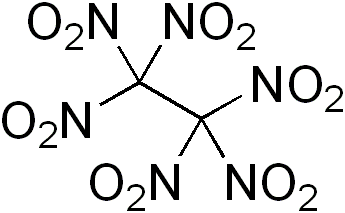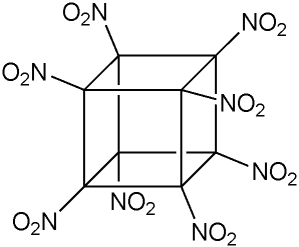Go To Halcyon Arms Storefront or Myrmidon Tactical Design Storefront For Purchase!
A COLLABORATIVE EFFORT BETWEEN Pharthan's Halcyon Arms and Marquesan's Myrmidon Tactical Design

Higher Resolution Image
SHOGUN-CLASS
SUPERDREADNOUGHT
NOTICE TO PROSPECTIVE BUYERS: This item is not recommended for nations under 500 Million population (within roleplay - if you do not follow NS Stats for roleplay, neither will I upon considering your nation), and it certainly not recommended if you do not otherwise have a well structured Navy. The Shogun-class is not for a new Navy by any means - it is for a well established Navy desiring Sea Dominance. I do not normally make statements of recommendations about how my customers should go about their business, but on this subject, I will.
If you are not well versed in the aspects of Naval warfare, I recommend the following instead:
- Gallant-class Fleet Carrier
- Ranger-class Guided Missile Destroyer
And, if you absolutely must have a large combatant vessel:- Longbow-class Missilenought
The above will suit you far better for far cheaper and make your Navy far more versatile and capable.
A COLLABORATIVE EFFORT BETWEEN Pharthan's Halcyon Arms and Marquesan's Myrmidon Tactical Design

Higher Resolution Image
SHOGUN-CLASS
SUPERDREADNOUGHT
RESTRICTION LEVEL FOUR*
UNIT COST: $176.1 Billion NSD, LIMIT TEN UNITS PER ORDER (INCLUDES Shogun AND Regent COMBINED)
DOMESTIC PRODUCTION RIGHTS NOT AVAILABLE
Stats:
Class: SBDGN, (Guided Missile Battleship/Nuclear)
Hull Style: Monohull
Length: 2497 feet (761 meters)
Width: 405 feet (123 meters)
Height: 509 feet (155 meters) (from waterline) 606 feet (184 meters) (with draft)
Draft: 97 feet* (29.5 meters)
Tonnage: 1,174,000†
Speed: 36 knots (41 mph, 66 km/h)
Aircraft: 12-18†
Boats:
6 RHIBS
2 Fast Attack Craft
Ship's Force: 6,390†
Air Wing: 322†
Deployed Marines: 252†
Armament:
2010 Standard VLS Tubes
120 Oversized VLS Tubes/BM Tubes
6 Triple Torpedo Tubes
9x SGH-460LR Major Caliber Guns, 58.62 Caliber (18")
2 15 MW FEL
24 Quad-Anti-Ship-Missile Tubes
Defenses:
8 1.2MW FEL
12 30mm Shield CIWS
7 57mm Dual Advanced Gun System/CIWS
10 25mm Mk3 Rapier Defense Autocannons
10 .50-cal Dagger ROADS
20 NRAM-32 Longsword (24 Missiles each)
240 Active Anti-Torpedo Decoy-Explosives
9 Active SONAR Decoys, towed
24 .50-cal Machine gun posts
Electronic Systems:
Testudo Prime Central Processing & Fire Control Suite
SANMEN Hierarchal Communications Suite
Theia Prime Electro-Optical Sensor Suite
Caelus Prime Over-The-Horizon Radar Suite
HMS-717 Synthetic-Aperture Sonar Suite
Armor: Steel/Kevlar/Carbon Fiber
Belt:21"
Bulkheads:15"
Deck: 12
Turrets:15"
Power & Propulsion
Power Source: 3 SD1H3 3,700Mw PWR
Back up Source: 10 Mw Diesel Generators
Battery Back up: 24 Hour life, 8 for propulsion
Propulsion: 6 Asimov Engineering SD-1 Waterjets.
(3.341 Million Horsepower),
2 Asimov Engineering SD-4A Azipods (110MW)
Secondary Propulsion: 2 Internal Asimov Engineering
CV-2 Motor-Propulsors (110 MW)
Tertiary Propulsion: 12 Extending Maneuvering Azipods
Maneuvering: 7 Athwartships Propulsors
GENERAL DESCRIPTION:
The Shogun-class of superdreadnought is a vessel designed and built jointly by Halcyon Arms and Myrmidon Tactical Design (who designate it as the Type-100 Sea Dweller), designed as an Over-The-Horizon Radar platform combined with strike-functions utilizing this function. The Shogun was named for the Japanese Warlord-General title of the Kamakura-to-Tokugawa eras. and named for it's ability to dominate large swaths of the sea at a time.
It is powered by a trio of large 3.7 Gigawatt Pressurized Water Reactors powering a common electrical distribution system. All propulsion power is derived off of this system in an all-electric propulsion plant. As a result, the ships are capable of 20 years of operation before needing to refuel, however, range is restricted by necessity of maintenance on the propulsion plants, which is recommended every three years at the longest.
The Over-The-Horizon Radar has a range of 300 miles to 1,500 miles, allowing for extreme range detection of enemy vessels, aircraft, and ballistic missiles. Combined with this system, the Anti-Ballistic Missile lasers are capable of taking out targets in orbit several hundred miles away, with a surface-to-surface range of approximately 20 miles. This design was deemed necessary to kill the Shogun's primary enemy; extreme-range ballistic missiles.
These anti-ballistic missile lasers are the outermost layer of the five-tiered defensive system. The fourth layer is comprised anti-air missiles and strike-missiles launched from VLS tubes, able to strike over the horizon and defend against long-range targets. A third layer is made up of the point-defense lasers, able to kill only in a line-of-sight manner, limiting them to roughly 12 miles from the horizon for surface-to-surface; those higher mounted can achieve surface-to-surface kills at 18 miles. Against air targets the range is largely based on weather conditions, though it can extend out to effectively kill at 50 miles. The second tier is manned by rolling-airframe missiles with a range of nearly 12 miles; they can be programmed for several kill modes to take out a variety of targets. Finally, the inner tier is comprised of 30mm, 57mm CIWS, 25mm autocannons and 12.7mm machine guns. The 25mm autocannons and 12.7mm cannons are not designed for point-defense, though they can be utilized as such. The 57mm CIWS is sufficient for kills at 3 miles, with the 30mm for just over two miles of range.
The ship is protected heavily against EMP, especially high-altitude bursts. When Condition Zebra is set, the hull of the ship functions well as a multi-tiered faraday cage. Those systems not able to be protected against EMP have stored replacement circuitry components and are designed to be easily replaced.
The surface-to-surface radar range extends just over 26 miles and can be used to detect ships at a slightly further range, pending their height. As the Shogun is effectively blind beyond this range until it's OTH radar range, the superdreadnought is usually deployed with a carrier strike group for additional protection, radar picketing, and AWACS coverage, which allows the ship to utilize the full extent of it's missile systems.
As a primary gun armament, the Shogun-class boasts three triple 18" inch guns, capable of heavy bombardment of shore targets. Against enemy ships, the Shogun carries a variety of VLS launched missiles, to include large up to 120 BGM-11 Spear Anti-ship/Cruise missiles with a range of 120 nautical miles or large surface-launched ballistic missiles and 96 BGM-18 Lance Anti-ship missiles with a 400 nautical-mile range, designed as carrier-killer missiles. Against generic targets the Shogun has 2010 VLS tubes, able to launch smaller cruise missiles, strike missiles, and anti-air missiles.
Amenities:
Crew amenities, for the most part, are as standard with any Pharthan Navy ship. Each individual sailor is allotted their own "Coffin-Rack," which storage underneath the rack, which sits in a tray that can be lifted to expose personal storage space, as well as a personal locker. Each rack space comes with a personal reading light, towel-hangar, emergency egress breathing device stowage, personal six-outlet power strip, and a state-of-the-art Smart Reveille Suite, or SRS.
The SRS monitors the sleep pattern of the sailor, and can be programmed in with the applicable Watchstation Schedule, Morning Routine & Muster, et cetera. For those requiring certain amounts of sleep such as pilots, it can also advise the sailor on when they should be falling sleep. The SRS is a built in computer roughly the size of a smart-phone, built into the rack itself and is tamper resistant. It also includes vibration sensors which are, as a standard, built into the walls and base of the rack, as well as separate remote sensors to be able to differentiate natural ship motion from the motions of the sailor.
To promote healthy sleep, the SRS will begin playing soft music of the sailor's choice to ease them awake within the optimal period prior to their next appointment, as well as emitting "peaceful" light.
In the event the sailor is late for watch or muster, a louder alarm and brighter lights will be emitted.
The speakers for the sounds are directed inward, and additional sound-proofing is provided to prevent disturbing other sailors.
While differing on each ship and in each compartment slightly, each berthing location houses between eight and 12 enlisted sailors. Officer berthings may be singular, double, or a quartet, depending on rank and station. Each berthing space comes with one computer, which, when available, is linked to the ship's internet and unclassified network; internet browsing on this network is often limited for security reasons, though general social media is allowed. A separate web-browser notebook is also provided to allow sailors to download movies, games, videos, et cetera, and more extensive chat with family. While still monitored for security reasons, this is not connected to the ship's unclassified data network and is more free to use.
Each berthing space has an ample amount of electrical outlets and storage space, both communal and personal, to allow for personal gaming systems, and each berthing space has one large flatscreen TV, with space for an extra. Additionally, every berthing space has their own minifridge and microwave oven.
For every forty sailors there is an additional community space, allowing for more activities to include the watching of movies, TV, gaming, et cetera, without disturbing those sleeping at the time.
For every sixteen sailors there is at least one head, to include two showers, two toilet stalls, and three sinks, though some areas may include more based on availability. These are often of stainless steel construction for sanitary reasons, and the shower-stalls are curtained off, though some may include a hard vanity door.
Gym services include rowing machines, various styles of treadmills, weight machines and racks, yoga mats and equipment, sports equipment for any open areas, and more at the request of the ship's recreational officers.
Go To Halcyon Arms Storefront or Myrmidon Tactical Design Storefront For Purchase!











